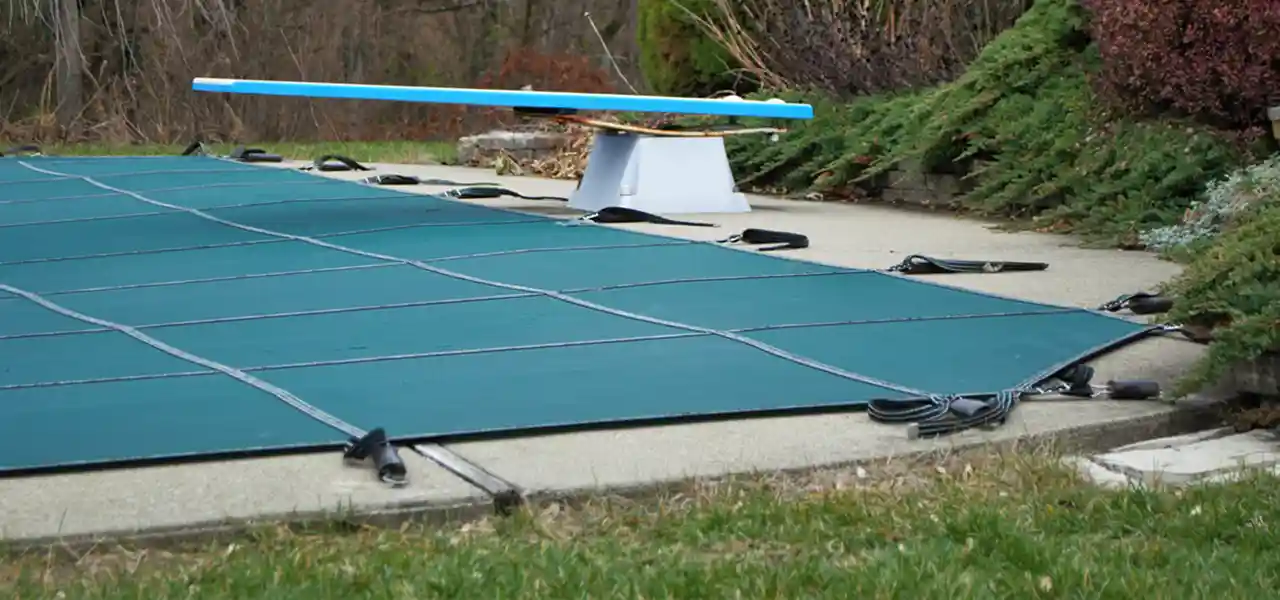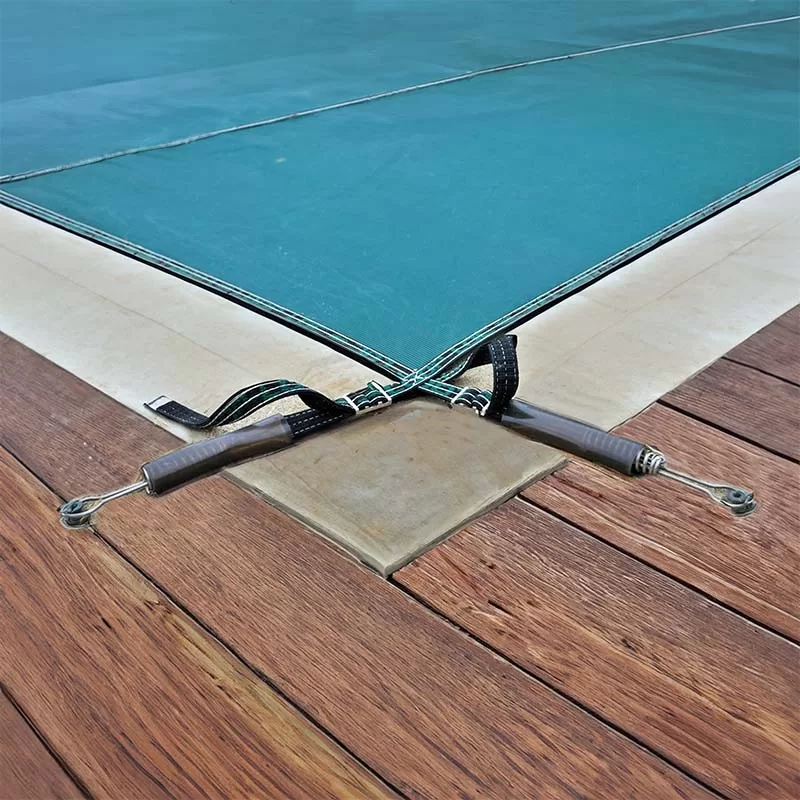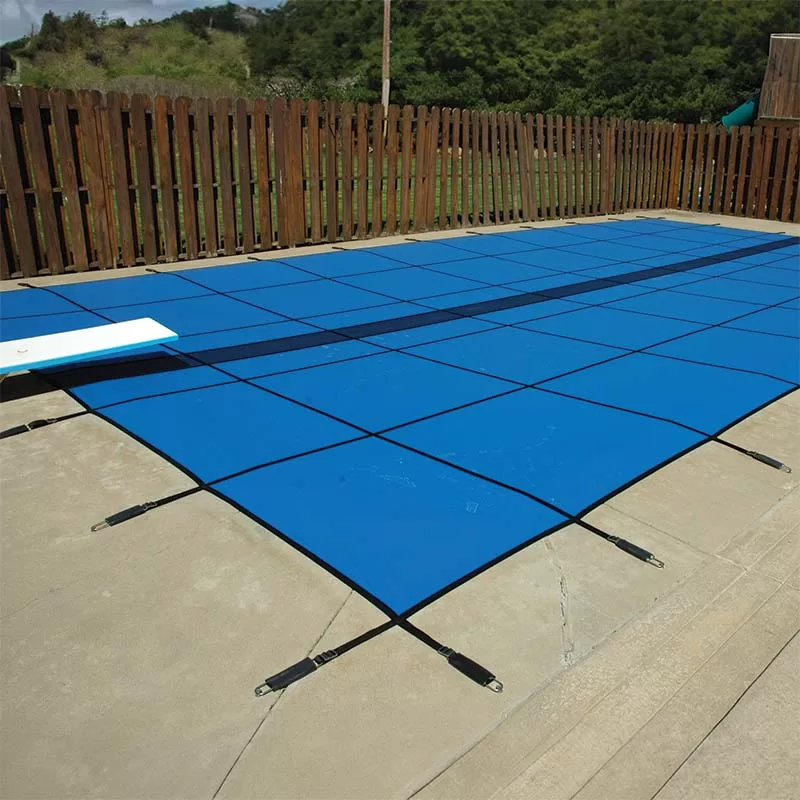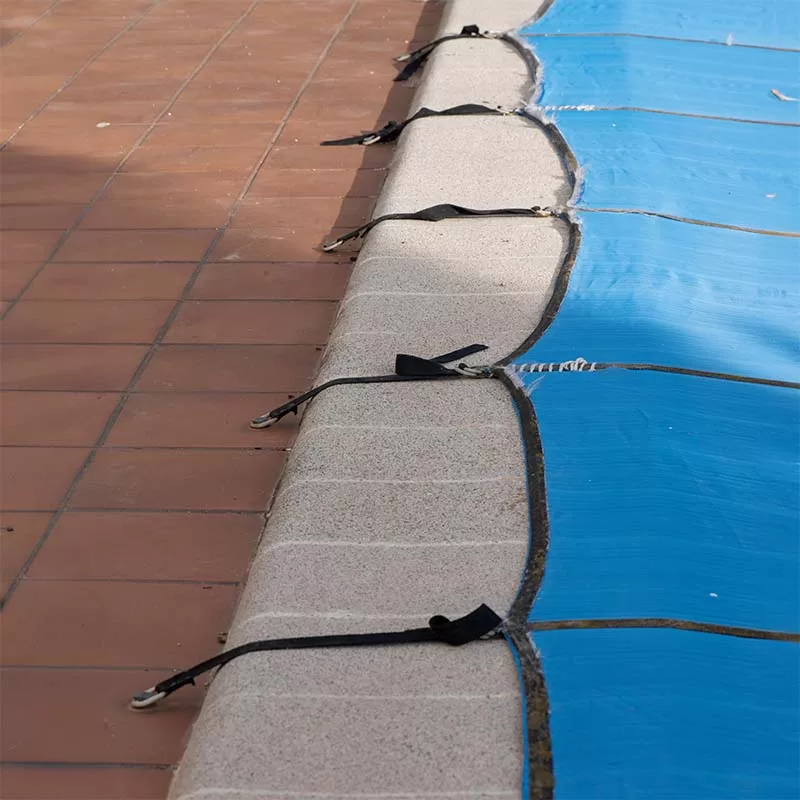FREE Standard Shipping On All Orders $100 or More!*

How to Install Pool Safety Cover Anchors
A safety cover is one of the best pool products you can buy. Safety covers look great, protect the pool while keeping kids safe, and they far outlast non-safety pool covers. In addition, they are easier to care for and are very low maintenance. However, installing a safety cover can be a bit tricky and requires extra work compared to installing a winter cover. So let's discuss safety cover anchors, straps, and how to get your cover safely installed.
Wood Pool Deck Safety Cover Anchors

Because wood can rot, or soften with age, a wood deck safety cover anchor is used, which has a wide flange on the top of the anchor, to protect the deck and hold the cover securely with more lateral strength. Installing the flange type anchors is more involved than other anchor types, and I recommend using 2 or 3 power drills, so you don't have to change bits so often.
First you drill a counter-sink hole, 3/16" deep, using a Forstner bit of the right diameter, so the anchor flange will sit flush into the wood, and not be a toe-stubbing hazard.
Next, using a 3/4" wood drill bit, drill a hole in the center, all the way through the wood. Drop the wood anchor into the hole, and then screw in the brass flange screws, using a #2 Phillips screw head. That's 3 bits, if you are keeping count. Now you can understand why I suggest using more than one drill!
Can you use concrete anchors in a wooden pool deck? No. Doing so not only voids the manufacturer's warranty, but it is also unsafe.
Concrete Pool Deck Safety Cover Anchors

The brass concrete safety cover anchor is the most common type of safety cover pin used. The standard cover anchor is threaded, but Meyco offers a pop-up anchor, which requires only 1/2 turn to raise or lower the anchor.
Brass anchors are 1/16" wider at the top, and when tapped into the hole, it press-fits into place, holding the anchor body stationary, as you turn the threaded insert up or down.
To install a brass cover anchor, you'll need a rotary hammer drill with a 3/4" masonry bit. A sharp, new bit will cut a clean hole; dull drill bits will cause more chipping of concrete around the hole, and can also take twice as long to drill the hole.
Place a piece of sturdy tape around the bit at 2-1/4", so you know when to stop drilling. Hold on tightly to the drill which may jump if you hit some steel mesh or large piece of aggregate in the deck. Be sure to hold the drill perpendicular to the deck, to create a vertical hole.
After drilling the hole, remove the dust with a blower, wet-dry vac or with a garden hose. Then tamp the anchor into the hole, using a tamping tool, so you don't damage the hex key hole, or bend the top rim of the anchor.
Paver Pool Deck Safety Cover Anchors
A paver pool deck is made up of interlocking bricks, pavers, stone or ceramic tiles. They are placed over a concrete sub-deck or on a bed of crushed stone or sand. Pavers can be mortared in place, but often are placed tightly together with a steel band on the outer edge.

For mortared joints or very tight pavers, you can drill into the joint between 3 pavers, and place the safety cover anchor in the same way as for concrete decks. Always place anchors into a joint, adjusting strap length as necessary to reach the anchor. Drilling directly into a paver (unless you use a core drill), risks paver cracking.
For pavers with some movement, or for a more secure installation, the anchor-in-pipe method is used. A 3/4" x 15" aluminum tube, available from your safety cover dealer, is inserted through the deck and into the earth below.
Use an extra long drill bit to open the earth up to the full depth of the tube (aka Lawn Tube), and pound the tube into the hole with a piece of wood on the tube, so the hammer won't damage the tube. When flush to the deck, pop-in a brass anchor into the top of the tube, and you're done!
Planter & Grass Anchors
Loop-Loc recommends not more than 30% anchor-in-pipe, but the cover held up fine over the years. Another option is to use a 6" auger to dig a 15" hole; insert a PVC pipe into the ground, and fill it with with concrete. Insert the brass anchor into the wet concrete and let it set-up for 48 hours.
Many inground pools have planter areas on the edge of the pool, or no deck at all on one side of the pool. In these cases, the anchor-in-pipe method is used, or also available are 18" safety cover stakes, suitable when you have just a few straps that run off a short deck, or into a planter. Stakes can be easily removed during pool season, if desired.
Meyco has introduced an improved stake (shown) they call the Garden Stake, with side wings in an X fashion, to hold more securely, even in wet or loose soils.
Installing new or replacement safety cover anchors is a snap - and totally DIY friendly. You can rent drill(s) from any rental shop, and for safety cover hardware - we've gotcha covered!